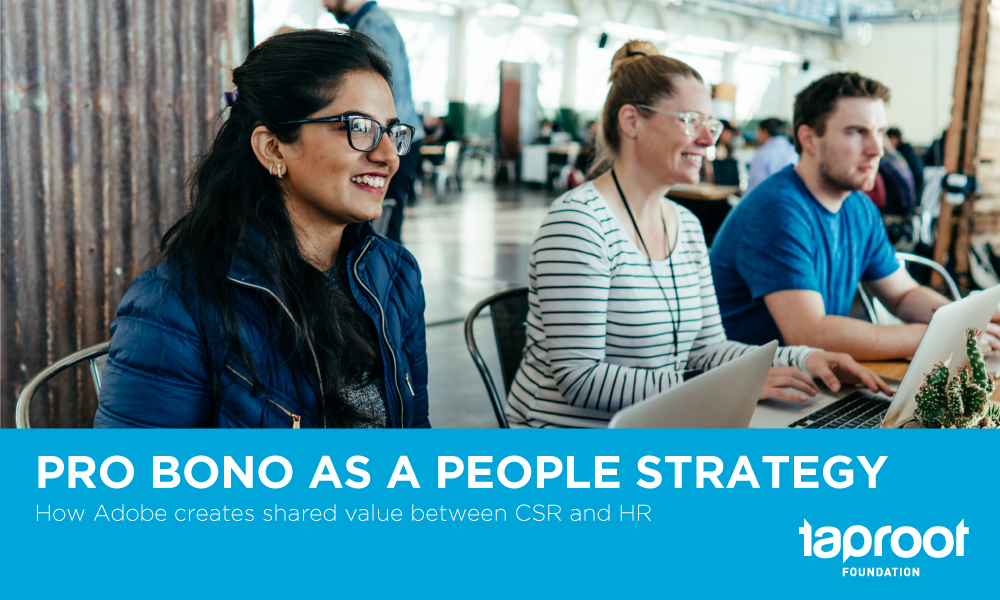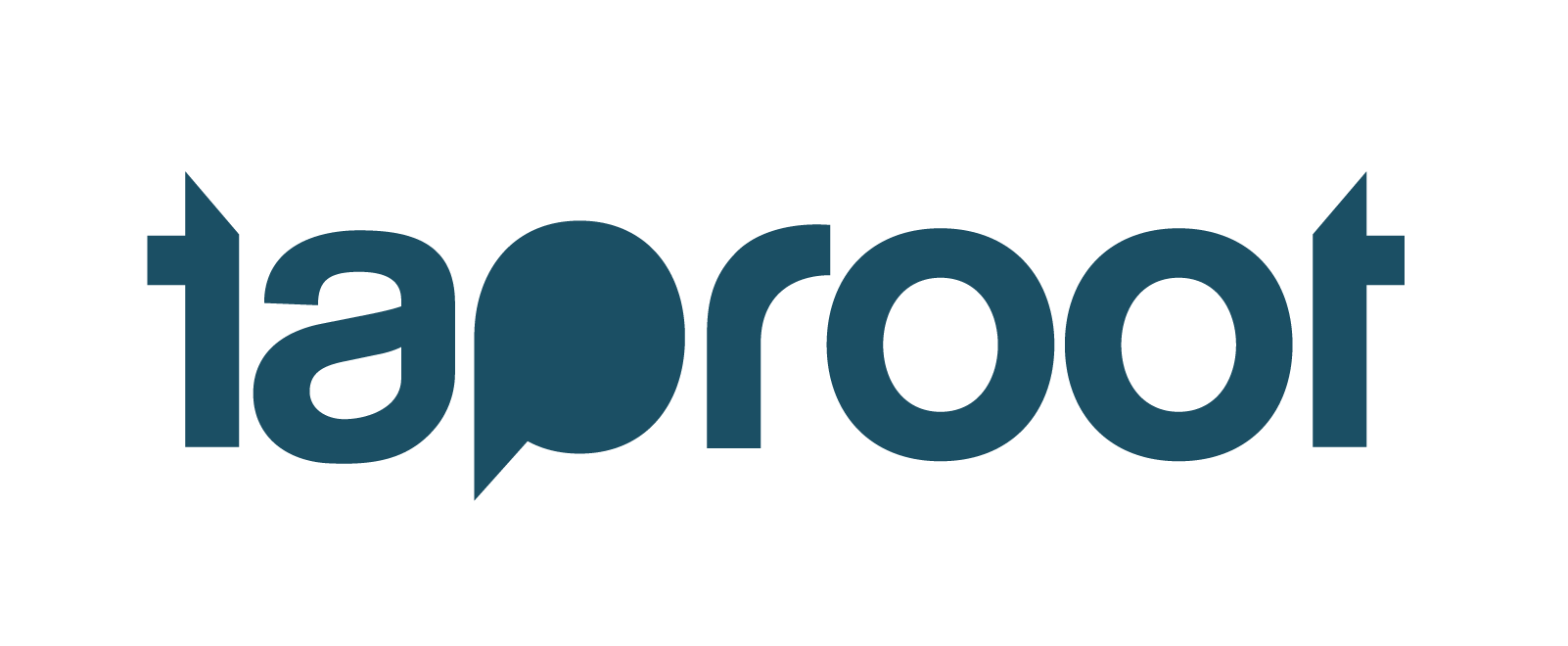Pro Bono As a People Strategy in Action: Adobe
Aligning with HR to prove concept

Download Pro Bono as a People Strategy today
Taproot has long made the case that a strong corporate pro bono program is a triple win—nonprofits receive the support they need, companies build deeper relationships with their communities, and employees have the opportunity to apply their skills in new and meaningful ways. While there is a robust foundation of evidence supporting the claim that pro bono is a powerful social impact strategy, practitioners often struggle to articulate the business case for pro bono.
Through Taproot’s work developing pro bono programs across the corporate sector, we’ve learned that pro bono can help companies meet key HR objectives like attracting, retaining, and developing their employees. In this paper, we explore how pro bono practitioners can align their pro bono efforts with their company’s HR strategy to create shared value across the company.
CASE STUDY: Adobe's Pro Bono Residency Program
The Pro Bono Residency Program is Adobe’s most intensive pro bono offering, matching volunteers with nonprofits to provide two to five hours of consulting support per week, over a six-month period. Now in its second year, the Pro Bono Residency Program is currently engaging 14 nonprofits and 28 employees across three locations. In addition to advancing the missions of Adobe’s nonprofit partners, this program helps employees hone critical leadership skills and further develop their own expertise.
Adobe's Approach
Adobe’s Sustainability & Social Impact team designed their post-program survey for the Pro Bono Residency Program participants to align with their annual company-wide survey, which tracks retention, engagement, and talent development. For Ashley Roberts Rhodes, Program Manager for Adobe’s Sustainability & Social Impact Team, mapping pro bono impacts against the company’s broader goals is a way for other departments to understand the value of their program. By comparing pro bono participants to the general population of their peers, Adobe is able to illustrate how the Pro Bono Residency Program can be a key driver for attracting and retaining their company’s talent. Demonstrating these unique gains against key data points that are relevant to Adobe’s broader HR and business goals will provide a compelling case for pro bono to share with senior leadership and HR practitioners as they begin to forge a partnership.

